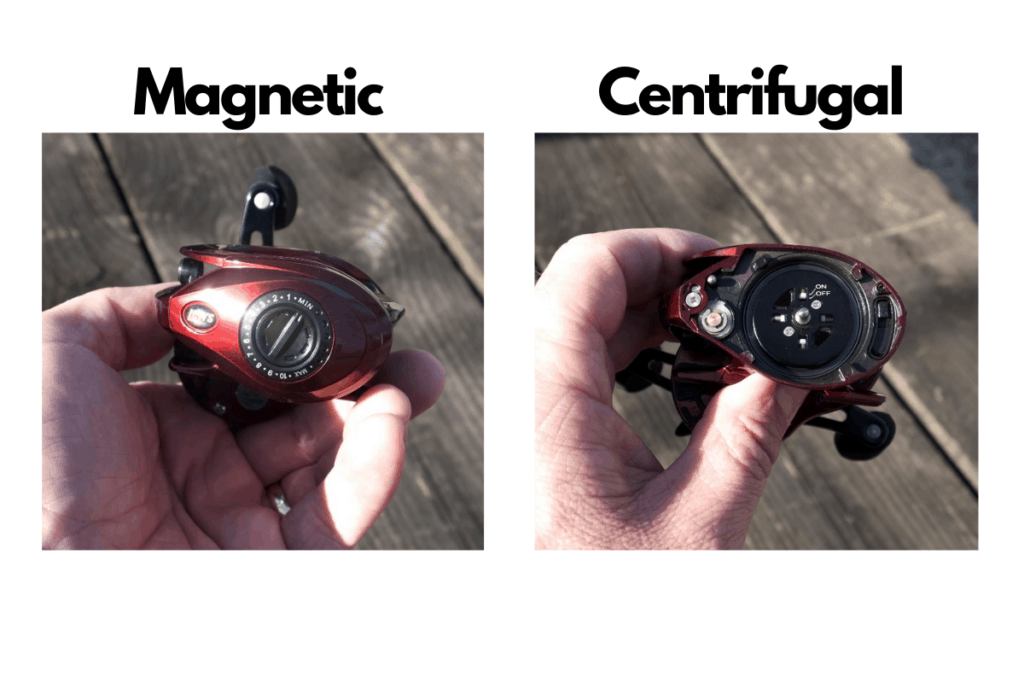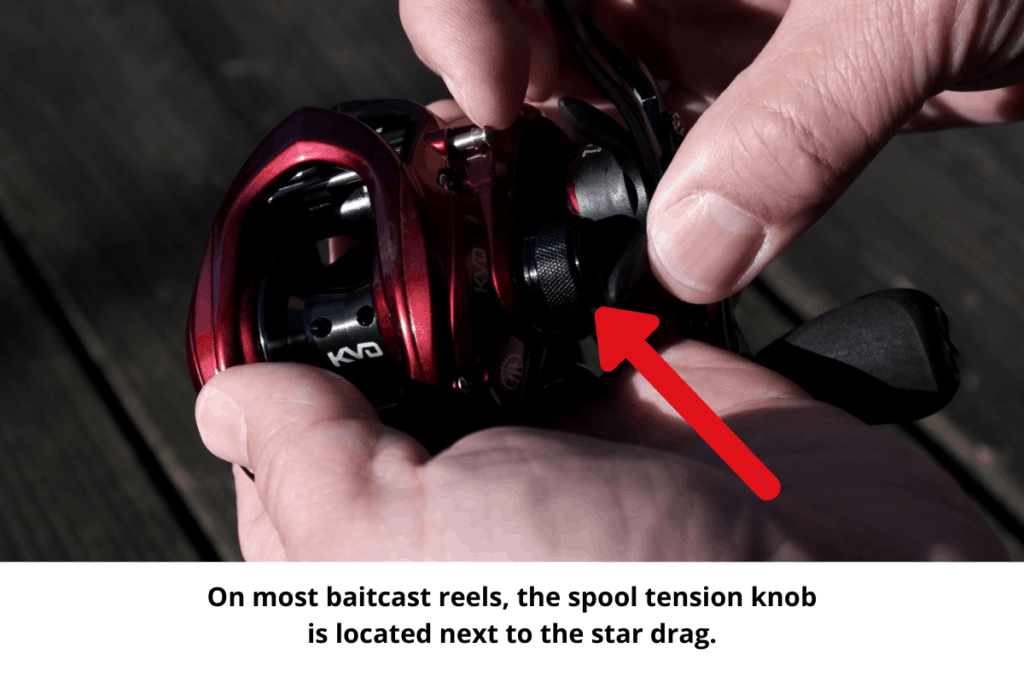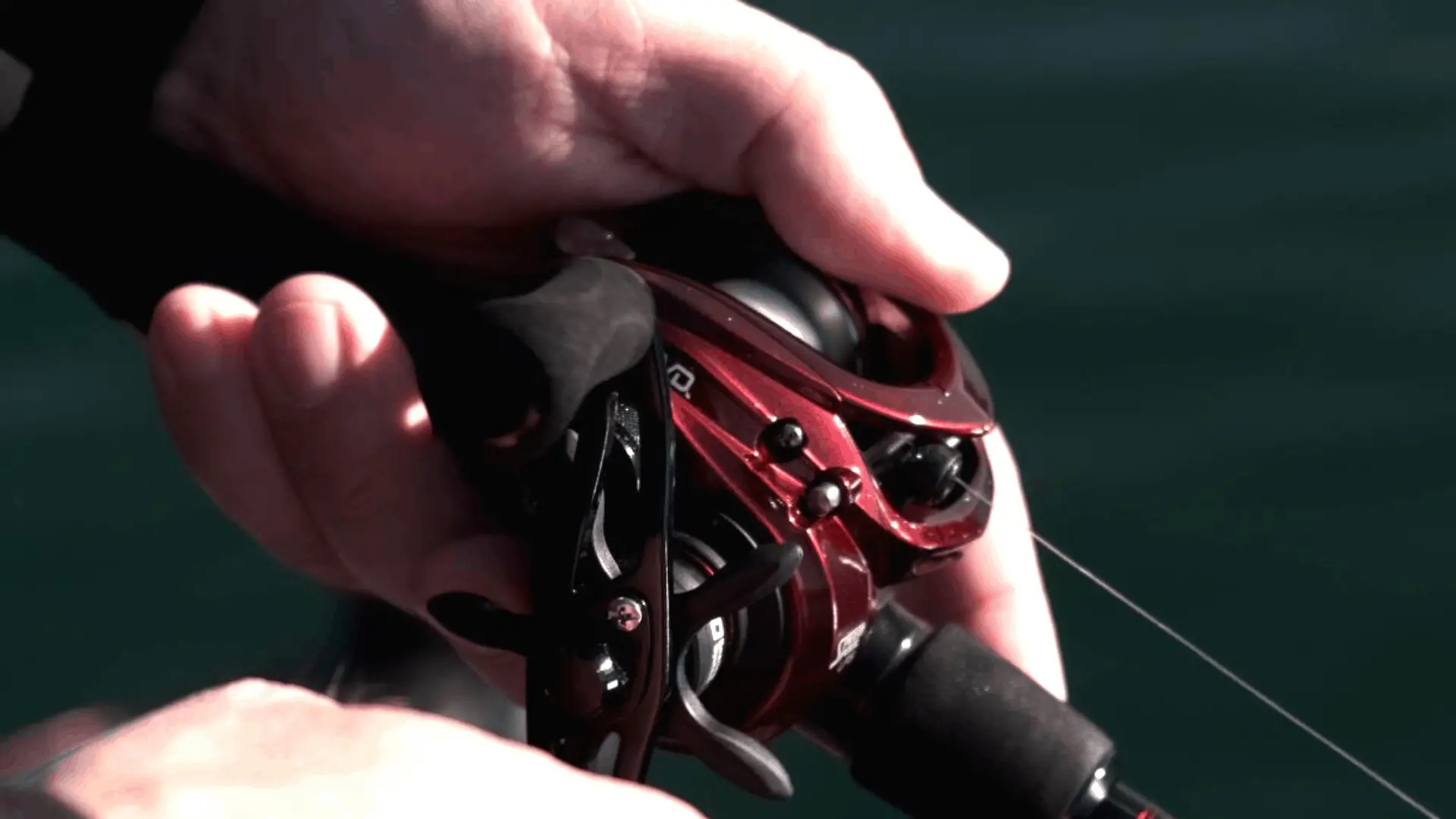There are few skills that have as much direct impact on your fishing as casting accuracy. It separates the good bass anglers from great ones.
To improve casting accuracy with a baitcaster an angler needs to adjust the braking system for the weight of the lure being used. It is also important to commit to the cast and keep your eyes on target.
The following article will go in-depth to make you a more accurate caster and quickly. These tips can be applied right after reading and improvements will be soon to follow.
Baitcast Reels are the Right Tools for Pinpoint Accuracy
A baitcast reel can be intimidating. Most every angler goes through the stages of spincast reels, or pushbutton, spinning reels, and finally baitcast reels.
Understandably so.
The dreaded backlash can cause even the most experienced bass angler frustration.
With that said, a baitcaster is known for precision and the ability to put lures in the tiniest of places. Taking the time to learn this tool will have a direct correlation on the number of fish you catch and land.
The Best Line Choice for Learning to Use a Baitcast Reel
When anglers are just learning to use a baitcast reel, spooling it with monofilament is by far the best choice – for several reasons.
First, the inevitable backlash is much easier to pick out of monofilament than braid. Even a gnarly bird’s nest in mono is likely to be removed without a terrible amount of effort.
A small backlash with braid can be a complete nightmare.
What about fluorocarbon?
Pure fluorocarbon line is expensive. It’s not uncommon to drop at least $20 for a 250 yard spool.
Anglers can pick up a quality filler spool of monofilament for $8-$12 and it will typically have 300-330 yards of line. If the worst scenario hits and the line needs to be cut out, it is easier on the wallet to replace monofilament when learning with a baitcaster.
Setting the Braking System on a Baitcast Reel
This is the most critical step in the process. Today’s reels have braking systems that are incredibly responsive and easy to set.
It’s important to note that when the lure weight changes, this process should be repeated to maximize the brake’s effectiveness.

Step 1 – Identify the Type of Braking System You Have
What type of braking system do you have?
There are both magnetic and centrifugal brakes. Some reels have one or the other, but many models currently have both and are called Dual Braking Systems.
Magnetic braking systems are traditionally adjusted from the outside, or externally. The side plate will have a dial that can be adjusted.
Most centrifugal braking systems need to be adjusted from the inside of the reel. To access these brakes the sideplate, where the magnetic brake is, will need to be removed. Each manufacturer has a different method for removing the plate, but most have a button, switch, or pin, that release the sideplate.
I like to explain to new baitcast reel users the centrifugal brake is for larger adjustments and the magnetic brake if for fine-tuning adjustments.
Adjusting the Centrifugal Brake
Many popular baitcast reels adjust the centrifugal brakes by manipulating what look like small, plastic tophats. Others are simple plastic switches.
The centrifugal brake is considered “on” when the switch is pushed towards the outside edge of the spool.
Make sure to adjust the centrifugal brakes in pairs that are opposite of each other. If there are four pins and you want two of them on, push the plastic slides towards the outside edge and in opposite pairs.

Step 2 – Adjusting the Spool Tension
Once you have a lure tied on, turn the magnetic brake off and make sure the centrifugal brake is set at 50% – half the brakes are on.
Locate the spool tension knob on the side of the reel and loosen it until the lure falls freely. Keep a thumb near the spool to eliminate a backlash from forming when the lure hits the water or the ground.
Start to tighten the spool tension knob until the lure falls slowly and stops when it hits the water without creating a small backlash. This is an excellent starting point.
Step 3 – Setting the Magnetic Brake
Once the spool tension is set, and the centrifugal brake is 50% on, set the magnetic brake around the half way point as well.
This is a great place to start making some test casts.
Adjust the magnetic brake and spool tension until you find the settings that are perfect for you.
Change Lure Weights – Readjust the Brakes
Anytime you have a drastic change in the weight of the lure, this entire process should be gone through again.
As anglers become more experienced, this process will go much quicker and some of the steps can even be eliminated at times.
The Importance of Rod Selection for Casting Accuracy
This is an often overlooked part of the process, but can have a drastic impact on accuracy.
When anglers are in the beginning stages of their bass fishing adventures, a rod or two is the norm. As skills progress and the involvement in the sport deepens, many anglers start to purchase rods tailored to match certain presentations.
The quality of the rod also makes a noticeable difference in casting accuracy. Many price-point rods, under $30, lack the back-bone and tip action for precise presentations, but these casting tips still apply and anglers can see huge improvements in their ability to put the lure where they want it.
Most rods used for close-up, shallow-water tactics will have either a medium-heavy or a heavy power rating. The tip action will often be xtra-fast or fast.
This combination of power rating and action are optimal for accurate lure placement when flipping, pitching, or skip-pitching.
When a longer cast is needed, the rod action becomes the key factor. When making a nice tight roll cast, a rod with a soft tip, yet plenty of backbone, will deliver precise lure placement. These actions will often be referred to as moderately fast.
Rod Length and Casting Accuracy
When using up-close, shallow-water presentations, this is a factor to consider. Taller anglers will be able to use longer rods for their underhand pitches, but a shorter angler may find a rod 7’4” is too cumbersome. A 7’ model may provide the control necessary to drop that jig right where it is needed.
When using presentations that are meant to cover a lot of water, like deep diving crankbaits, a long rod is preferable. A rod designed for cranking applications that is composite and at least 7’6” will deliver a crankbait with much more accuracy and distance.

The Importance of Keeping Your Eyes on Target When Casting
Once the rod and reel are set, this is the most important aspect of accurate casting.
Think of a major league pitcher throwing a baseball.
The best, and most accurate, pitchers have a quiet head that keeps the eyes focused on the target. In other words, the head is not moving much and the focus is on a small area.
The movie the Patriot explains it this way. Mel Gibson’s character tells his sons to “aim small, miss small.”
Zero in on exactly where you want that lure to land, let your arms and hands manipulate the rod and reel, and cast.
When more advanced techniques are attempted, like skipping lures under docks, most anglers lose focus and watch the rod tip. This is a sure fire disaster. Instead, keep a keen and diligent focus on exactly where you want that lure to go and let the mechanics take care of itself.
I promise, your accuracy will improve almost instantly.
Commit to the Cast for Accuracy
Being anxious about a cast almost always means that the presentation is going to miss the mark.
The mental aspect of casting accuracy is real and the best anglers in the world know it.
When an Elite Series pro approaches a dock, he or she knows that jig is going to skip right under it. There is no hesitation.
Of course, there are times when the cast is errant, but committing to it and believing it will do wonders for your casting accuracy.
When an angler is hesitant about a cast, the natural result is to slow down the actual casting process.
The roll cast doesn’t have a nice zip to it. The underhand pitch is forced, or the pitch skip is not fluid.
Believing in and committing to the cast will result in hitting your targets much more often than you may think. As a result, your confidence will sky rocket and your casting accuracy will improve even more.
No where is committing to the cast more important than when an angler is learning to skip lures. If there is any hesitation or any focus drifting from the target, it is almost assured to end in a mess.
Final Thoughts
Casting accurately with a baitcast reel will result in many, many more fish being caught.
Learn how to set the braking systems properly, start off with monofilament line, use a rod you are comfortable with, keep your eyes on target, and commit to the cast.
In a short time you will have improved your accuracy and enjoy this wonderful sport even more.
Tight lines. Be safe and make sure to encourage someone today. You never know how you may change their life forever.
Isaiah 6:8
Recent Posts
There are few things that are more fun than watching a bass explode on a topwater lure. The wide diet of largemouth bass create lots of opportunities for anglers to mimic prey species. The Two...
Angler frustration can build when cast-after-cast is ruined by weeds and slime getting stuck on your lures. This reduces the amount of time your bait is working at its maximum efficiency and...

